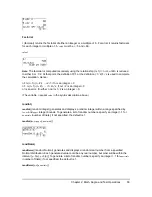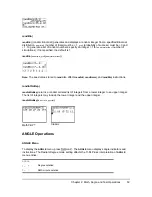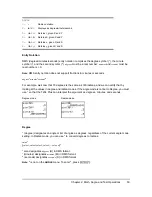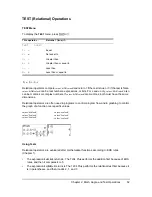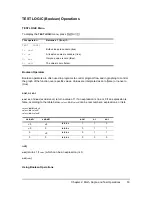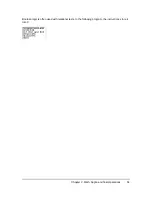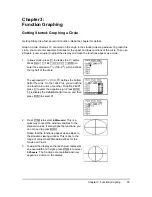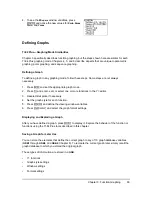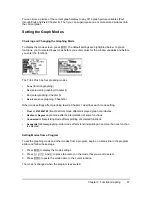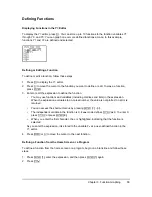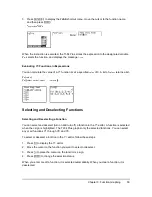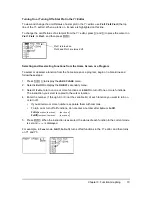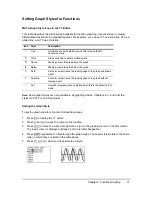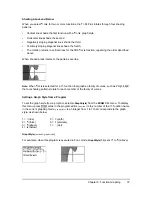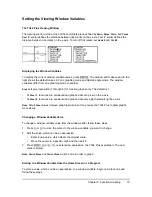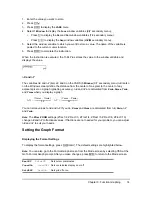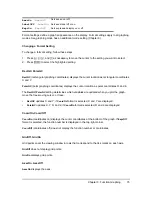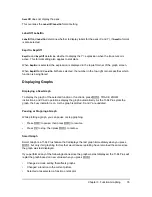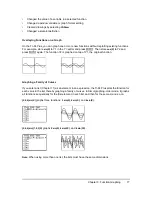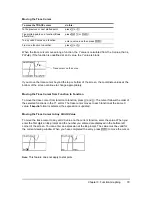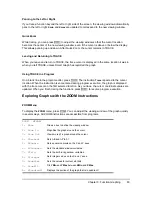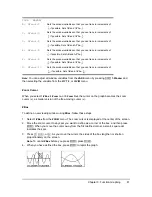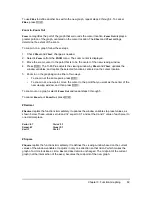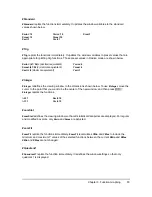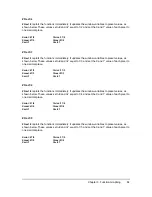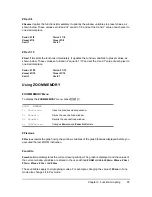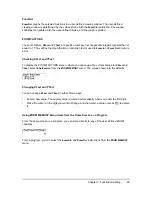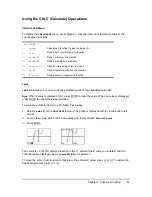
Chapter 3: Function Graphing
72
Shading Above and Below
When you select
é
or
ê
for two or more functions, the TI-84 Plus rotates through four shading
patterns.
•
Vertical lines shade the first function with a
é
or
ê
graph style.
•
Horizontal lines shade the second.
•
Negatively sloping diagonal lines shade the third.
•
Positively sloping diagonal lines shade the fourth.
•
The rotation returns to vertical lines for the fifth
é
or
ê
function, repeating the order described
above.
When shaded areas intersect, the patterns overlap.
Note:
When
é
or
ê
is selected for a Y= function that graphs a family of curves, such as
Y1={1,2,3}X
,
the four shading patterns rotate for each member of the family of curves.
Setting a Graph Style from a Program
To set the graph style from a program, select
H:GraphStyle(
from the
PRGM CTL
menu. To display
this menu, press
while in the program editor.
function#
is the number of the Y= function name
in the current graphing mode.
graphstyle#
is an integer from 1 to 7 that corresponds to the graph
style, as shown below.
GraphStyle(
function#,graphstyle#
)
For example, when this program is executed in Func mode,
GraphStyle(1,3)
sets Y1 to
é
(above).
1 =
ç
(line)
2 =
è
(thick)
3 =
é
(above)
4 =
ê
(below)
5
=
ë
(path)
6 =
ì
(animate)
7 =
í
(dot)

